Newcastle United needed to beat Leicester City to get back to winning ways.
They are currently 12th in the Premier League after 16 rounds, a poor position for a team that has recently been considered one of the best
in England.
Eddie Howe‘s side didn’t only win but also overwhelmed Leicester City with four goals to nil.
However, the first goal that opened the scoring for Ruud van Nistelrooy‘s side was from a creative short corner.
In this tactical analysis, we will illustrate Newcastle United’s tactics in short corners against Leicester City and how they were simple, effective and unexpected.
The Old Story From West Ham United
We often hear about how coaches develop by noting others’ ideas to stay up to date and steal new knowledge.
Newcastle United are a good example because they benefited from West Ham United, who tested Leicester City’s gaps at defending short corners.
Newcastle United studied this match, discovered the gaps, and then designed effective and varied routines to exploit them.
Let’s start with the first one!
pic.twitter.com/twtvpJrHcF
— Footie Clips (@FootieClips) December 17, 2024
In the photo below, Leicester City defend with four zonal defenders (green), five man markers and a defender for the rebound (orange).
One of West Ham United’s players on the edge of the box suddenly moves toward the taker.
This means that this rebound defender will move with him to defend the probable short corner, especially since this player is Mohammed Kudus.
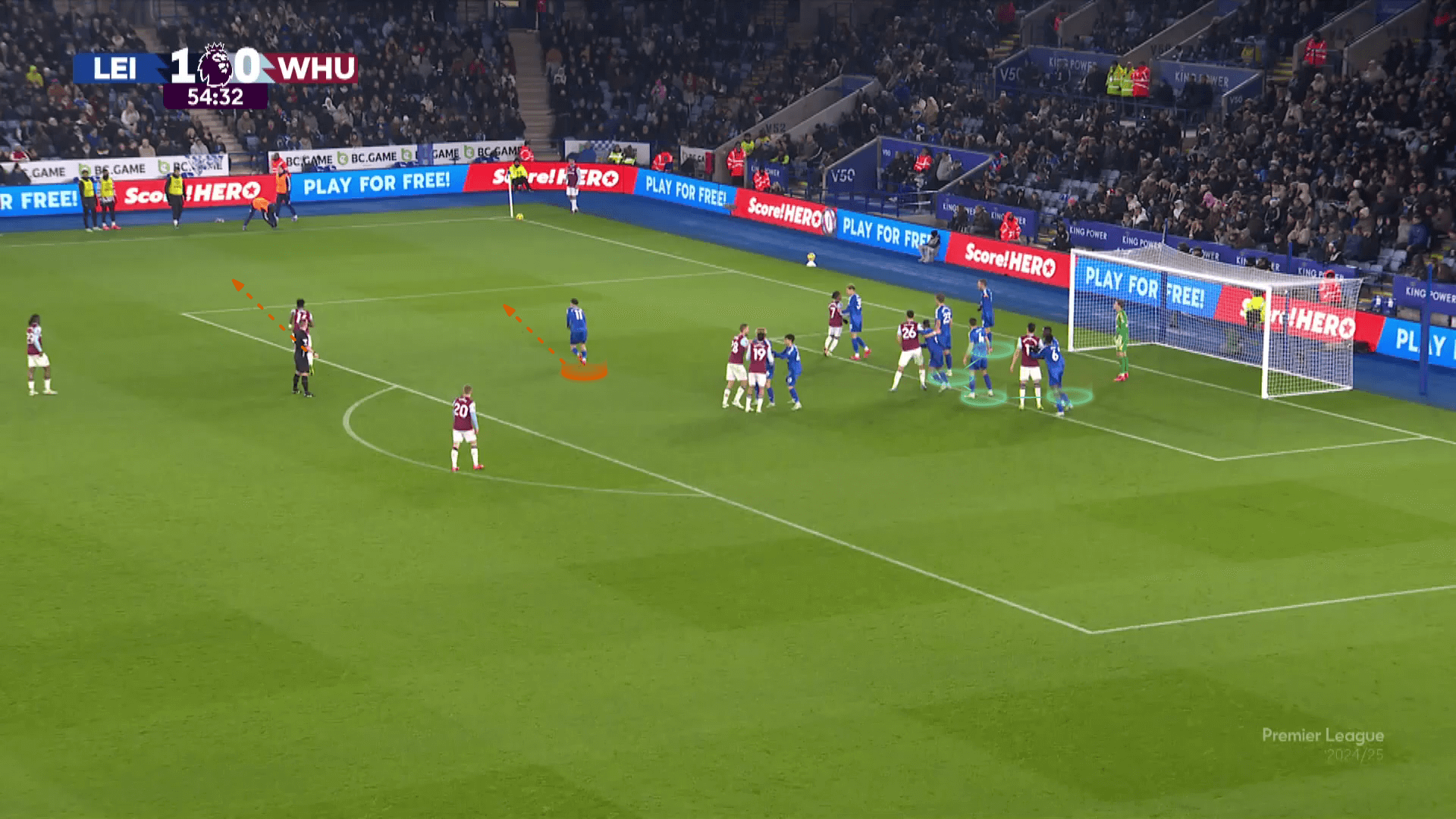
In the photo below, the first zonal defender (green) goes to the short area to help in that 2v1 situation as the taker overlaps and joins the game.
The other thing we should mention is that the rebound area is free now, and you can see the short defender is worried about that, checking his shoulder back while tracking Kudus.
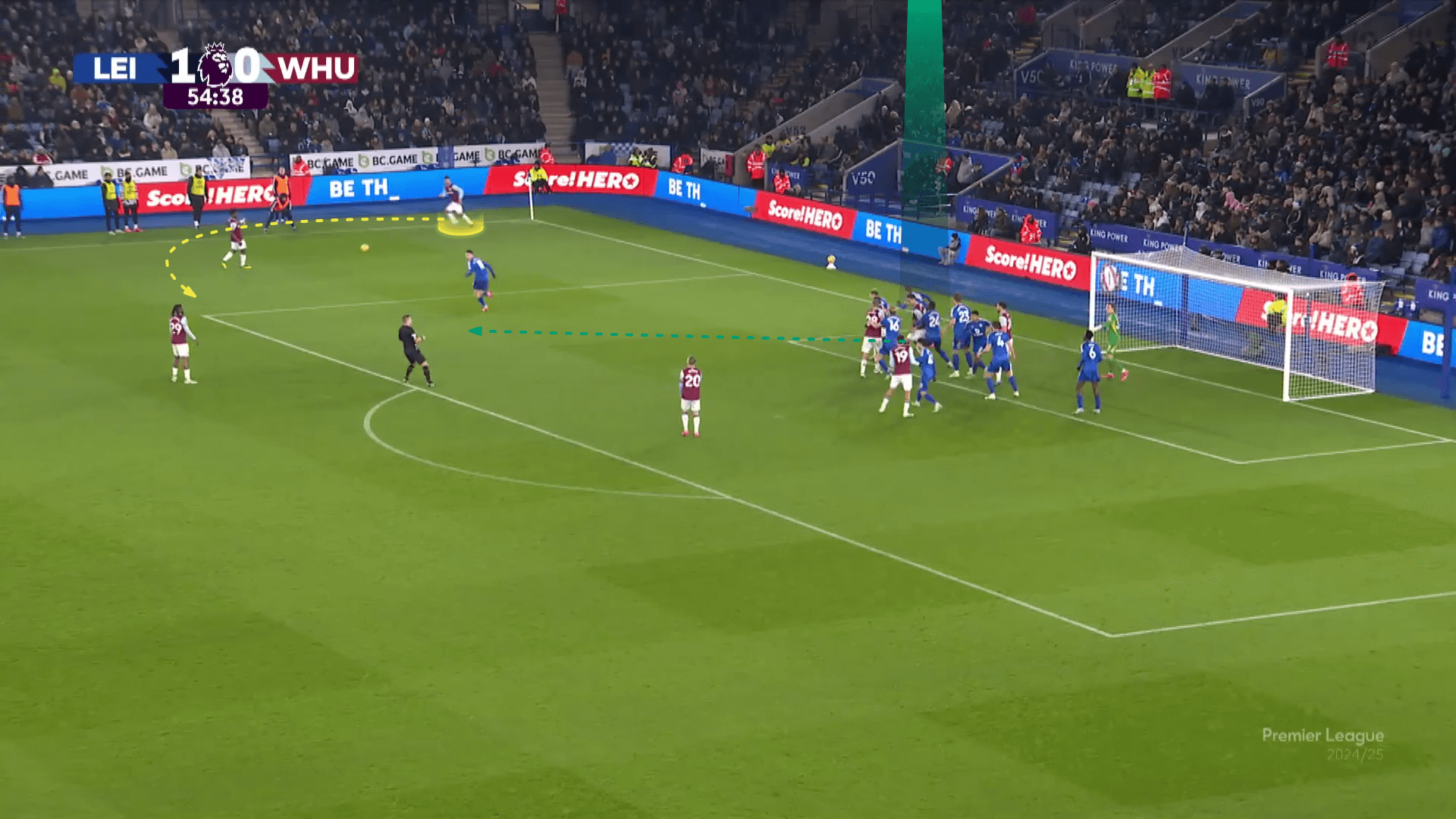
The problem is that the first zonal defender cuts a long distance to reach the short area, which means that a quick 2v1 is implemented over the short-option defender (the highlighted circle).
Kudus can easily pass to the taker again (after overlapping) to cross from such a dangerous area, but he decides to dribble outside toward the line.
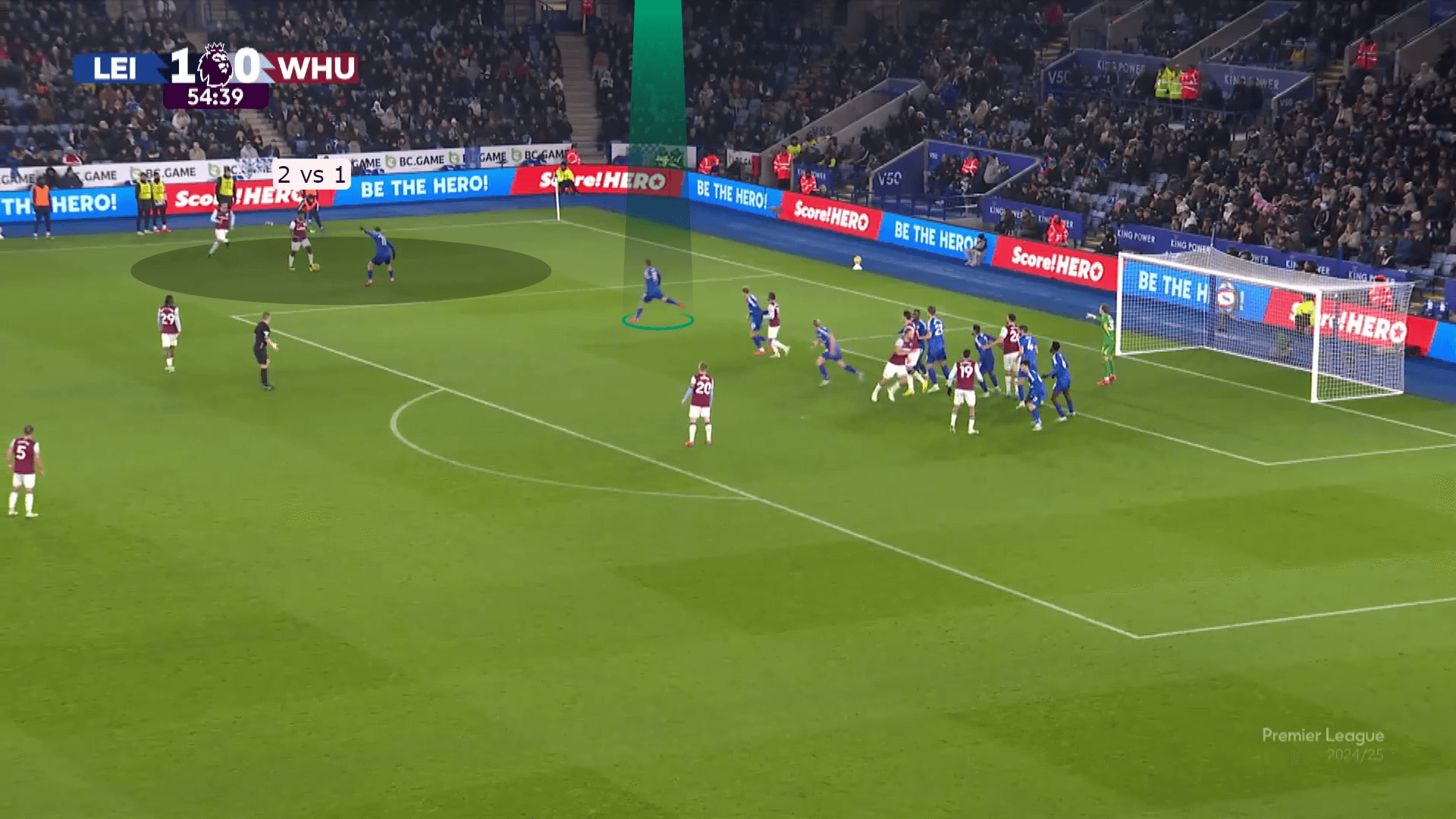
In the following corner, the short-option attacker (Mohammed Kudus) starts in the short area from the beginning, so the orange defender is dragged to the short area, leaving the rebound area free.
pic.twitter.com/G1bwYKsxfw
— Footie Clips (@FootieClips) December 17, 2024
West Ham United want to target Jarrod Bowen (blue) with a direct mid-level cross, so two players (white) run to the first two zonal defenders taking their attention.
The other three have the same role in hindering the zonal line from pushing up and dragging their markers with them, too.
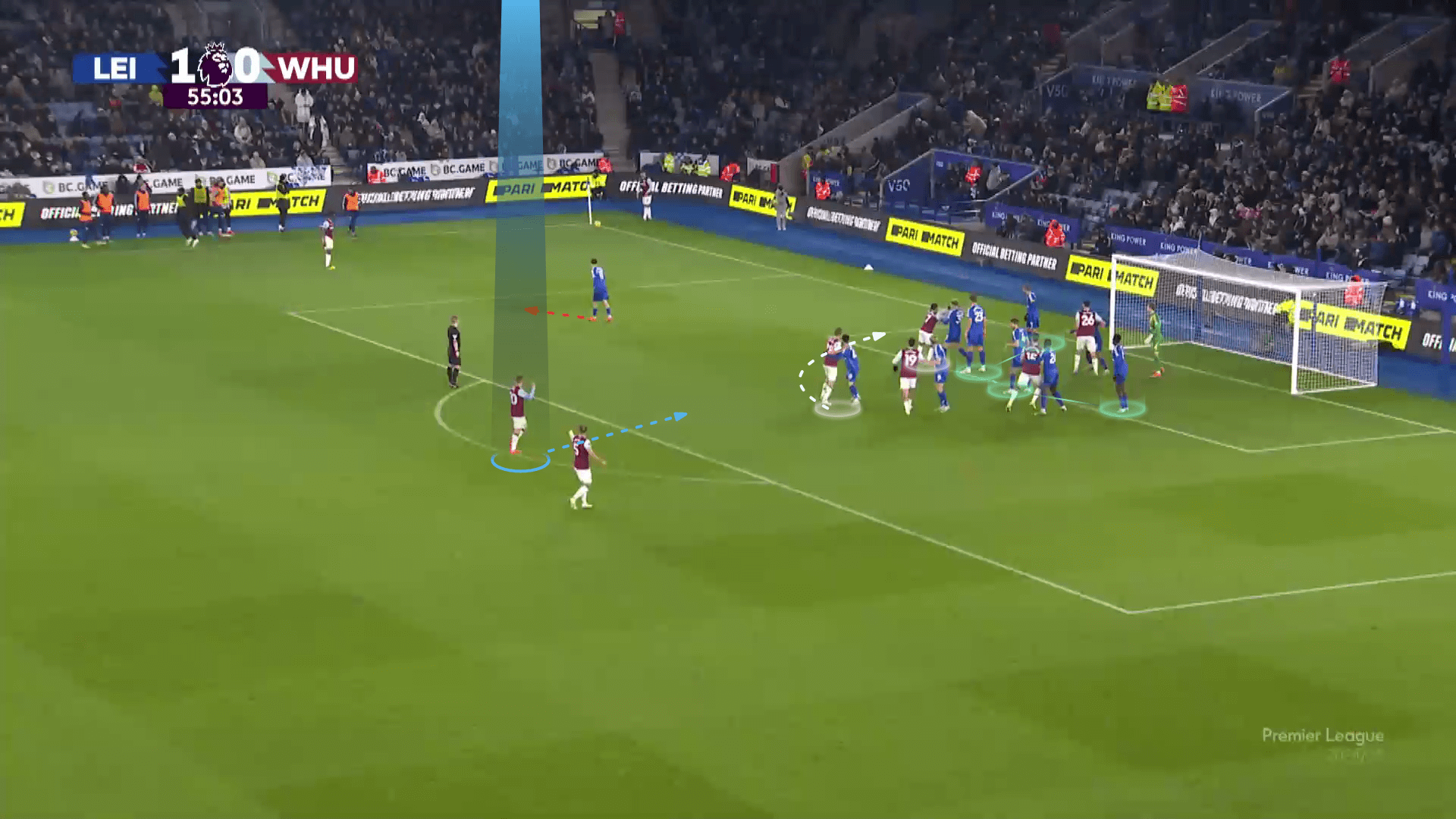
The plan works, but the cross isn’t optimal.
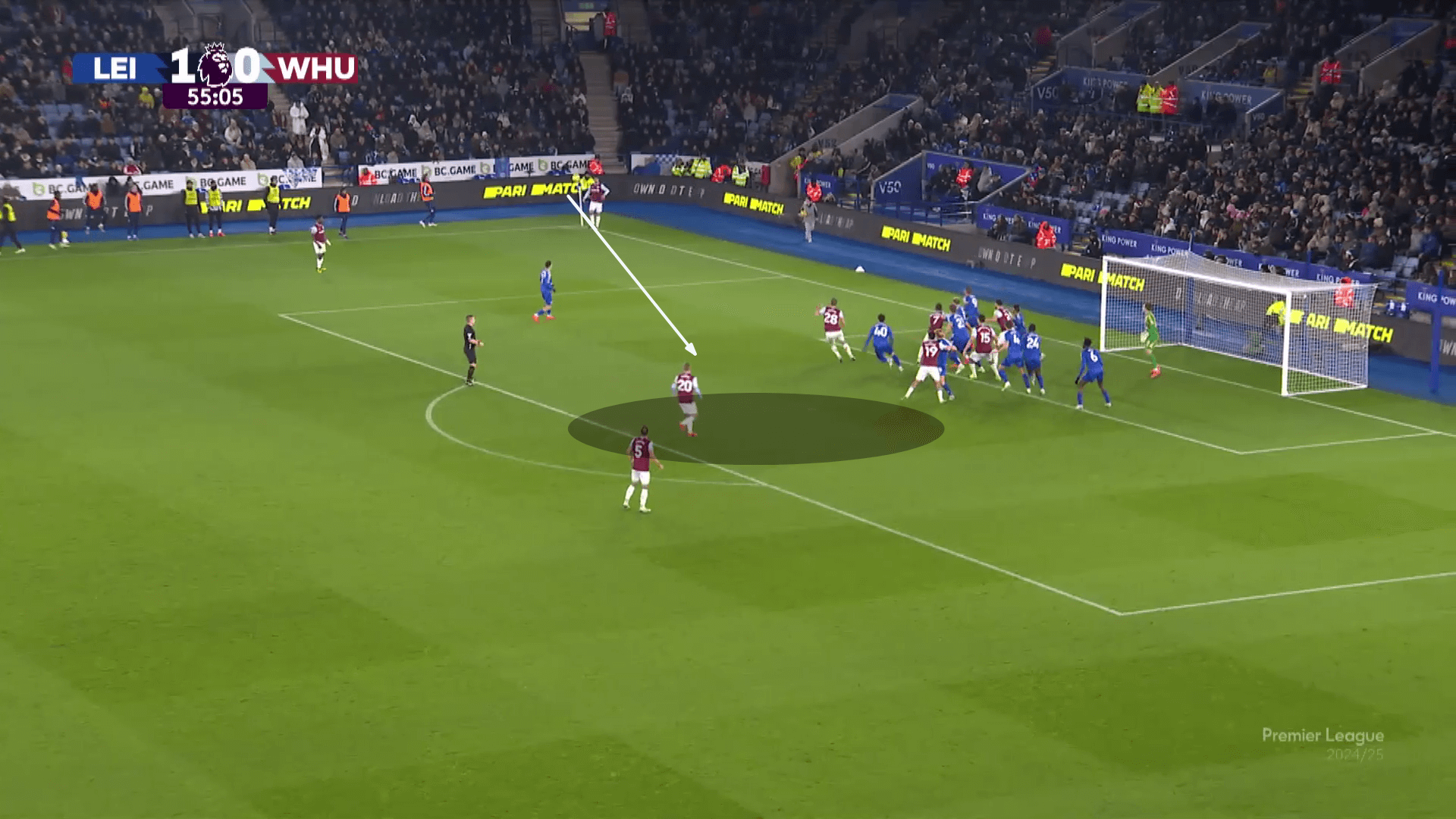
Newcastle United vs Leicester City
Newcastle United studied this match, discovered the gaps, and then designed effective and varied routines to exploit them in their match against Leicester City.
pic.twitter.com/M1z3tU3352
— Footie Clips (@FootieClips) December 17, 2024
In the photo below, the first corner in our match comes while Leicester City keep the same defending strategy with four zonal defenders (green), five man markers and a player on the short and rebound area at the same time.
Newcastle United’s attacking scheme involves five attackers, with the five man markers inside the box, a short-option attacker, two players standing on the edge of the box (orange), and a security player at the back.
The plan is to pass the ball directly to the first player on the edge of the box so the path to him is too long for the first zonal defender to follow.
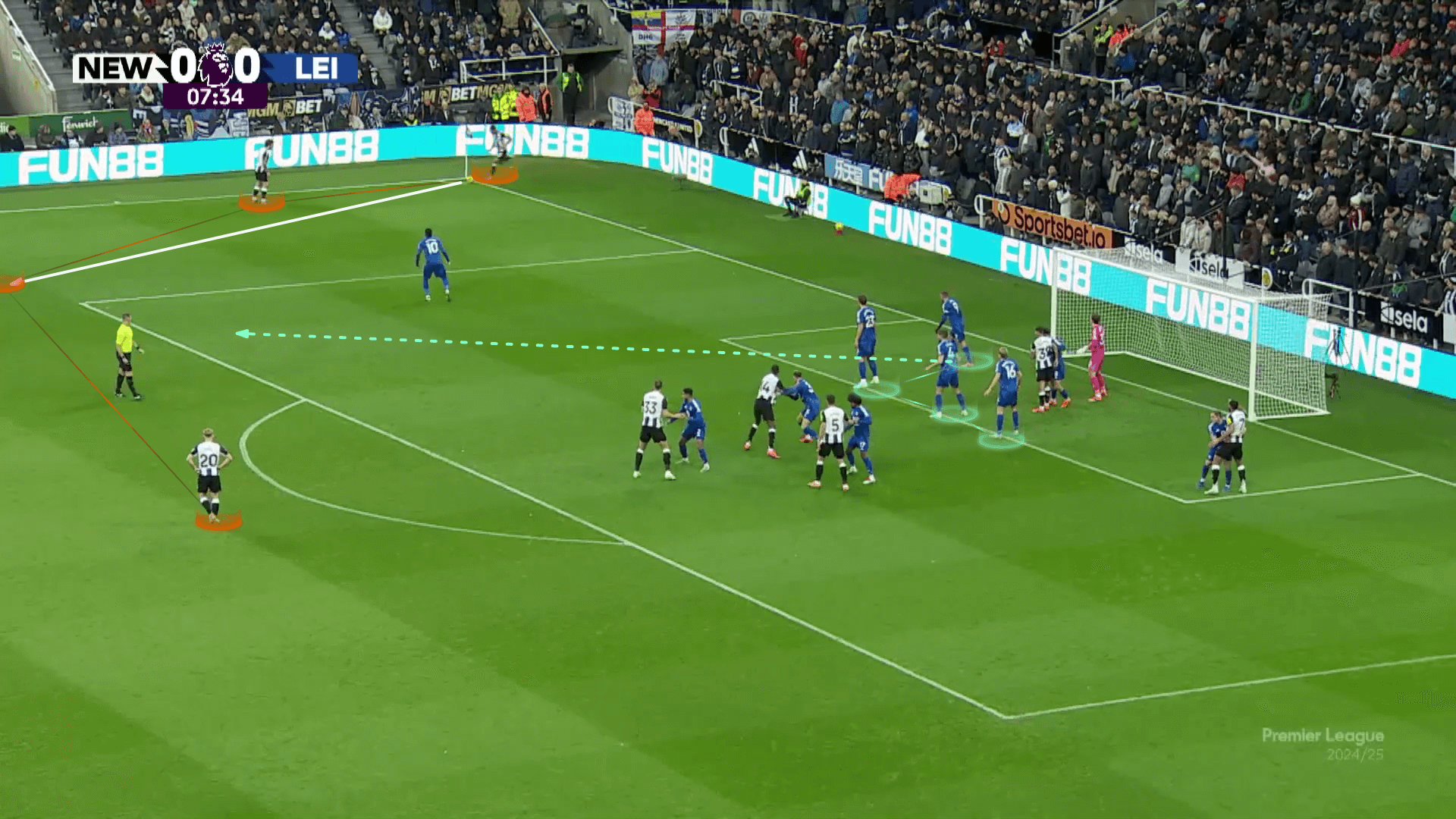
In the photo below, the second part of the plan is to target Dan Burn (yellow), who will start late in the middle point and then make a curved run to the far post on the blind side of the zonal defenders.
Joelinton (#7) will also stand beyond him to be in the targeted area (overloading).
This curved run around his teammate helps him to take Fabian Schär (#5) as a screen, meaning that he will hinder his marker.
Alexander Isak (blue arrow) runs to the near post as an option in case Dan Burn can’t shoot directly.
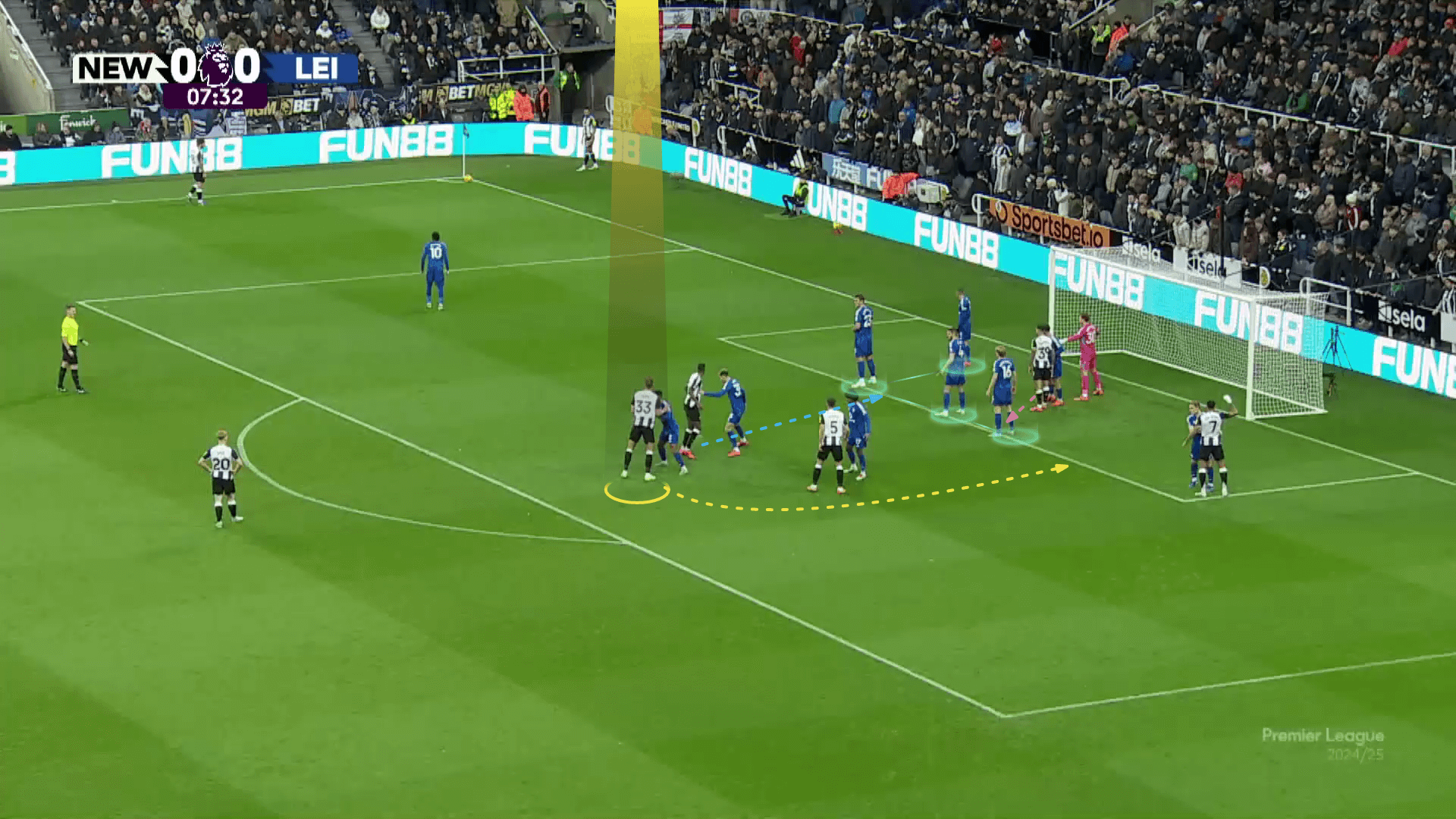
The screen is clear below (yellow), while a player comes from the last zonal defender’s blind side to take his attention (pink arrow).
Joelinton is also a target option because there are no zonal defenders; he can also overcome his man marker easily because his man marker suffers from an orientation problem.
This is clear below because the man marker can’t track the moving ball and his attacker, who runs behind him on the opposite blind side.
Thus, he cannot track the ball and the attacker at the same time, which is called an orientation problem.
The short-option defender is forced to chase the ball because the late zonal defender is also a bit worried about the taker and the short-option attacker.
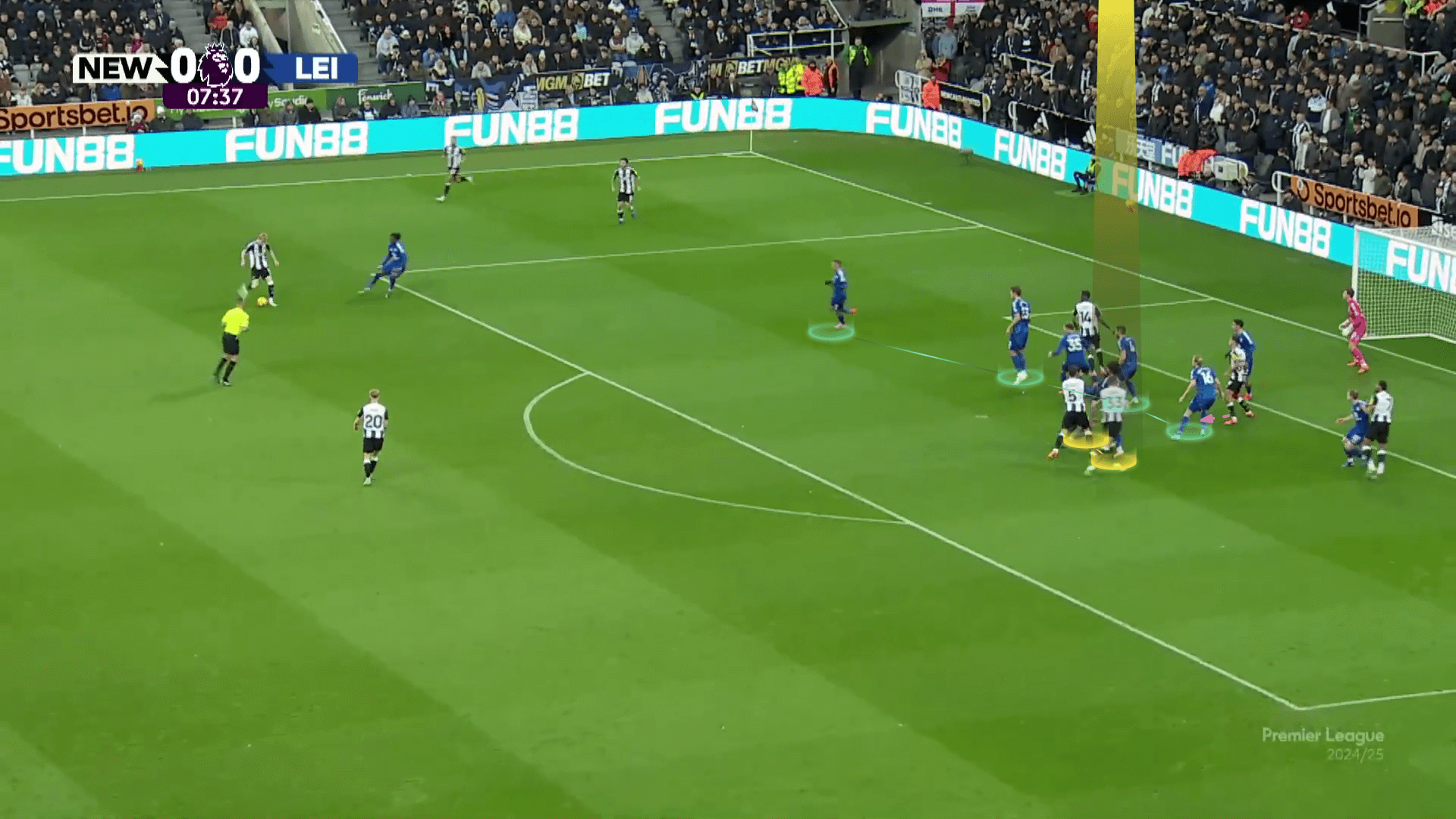
The plan works and ends with a chance, as in the photo below.
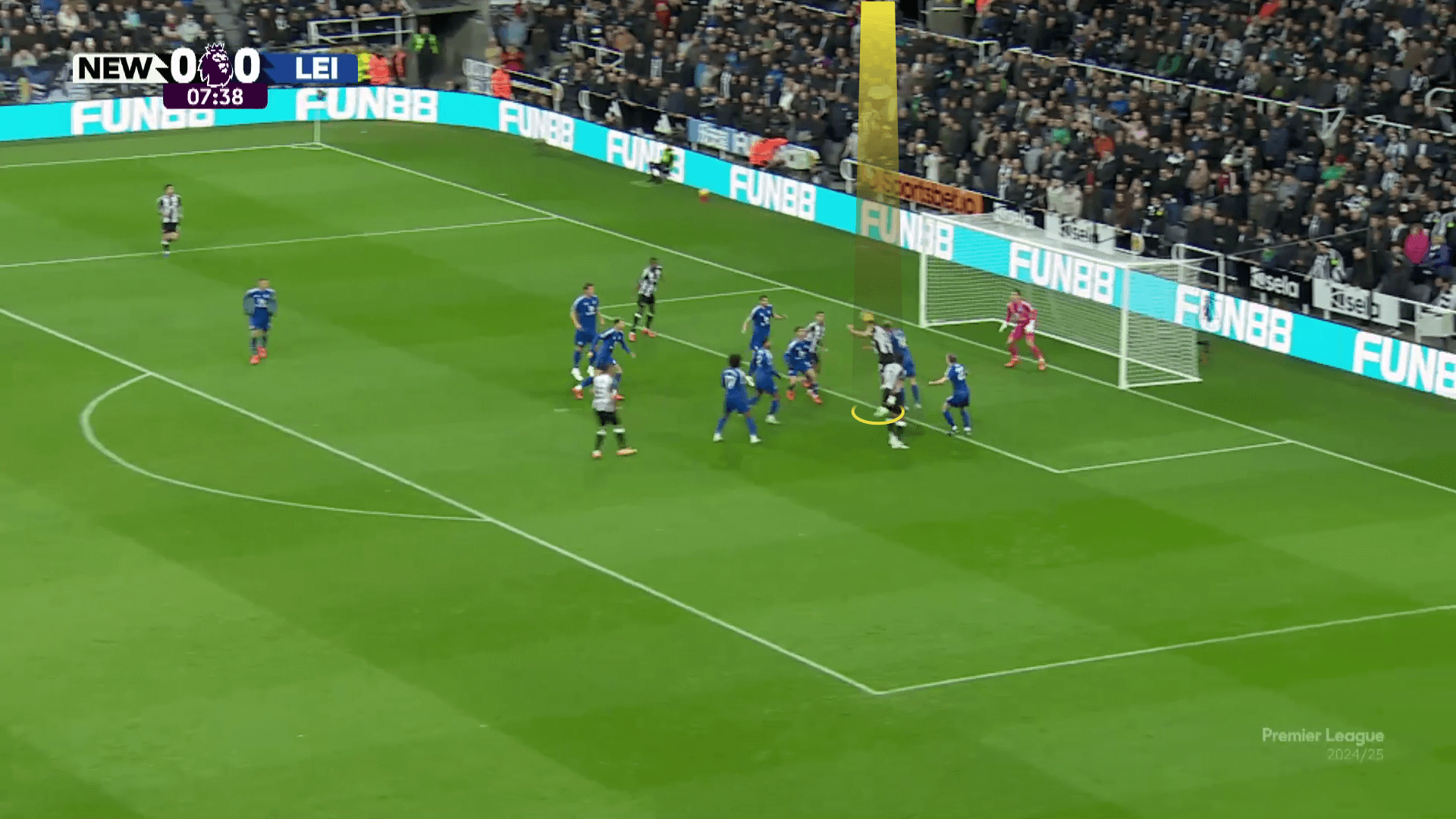
After that, Newcastle United implemented an excellent variation, leading to the first goal.
pic.twitter.com/Idr0vTJOKU
— Footie Clips (@FootieClips) December 17, 2024
Next time, the short-option attacker receives the ball, not the rebound player, as in the previous one.
The first zonal defender makes the same late run, but they decide to manipulate him.
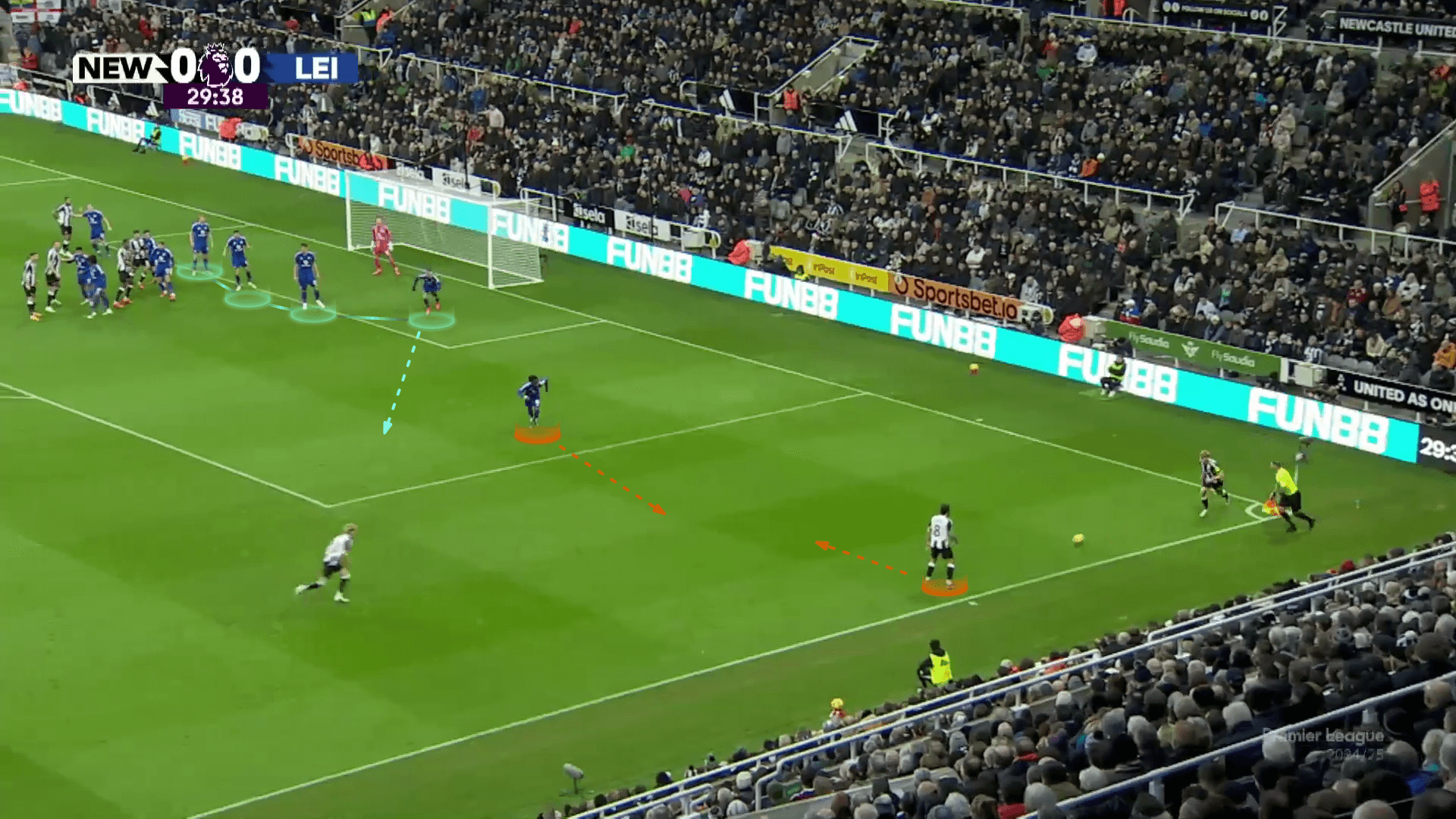
As shown below, Newcastle United’s first rebound player and the taker make two overlapping runs simultaneously, making the first zonal defender hesitate.
However, he decides to go toward the corner of the box as usual, also trying to avoid the previous scenario.
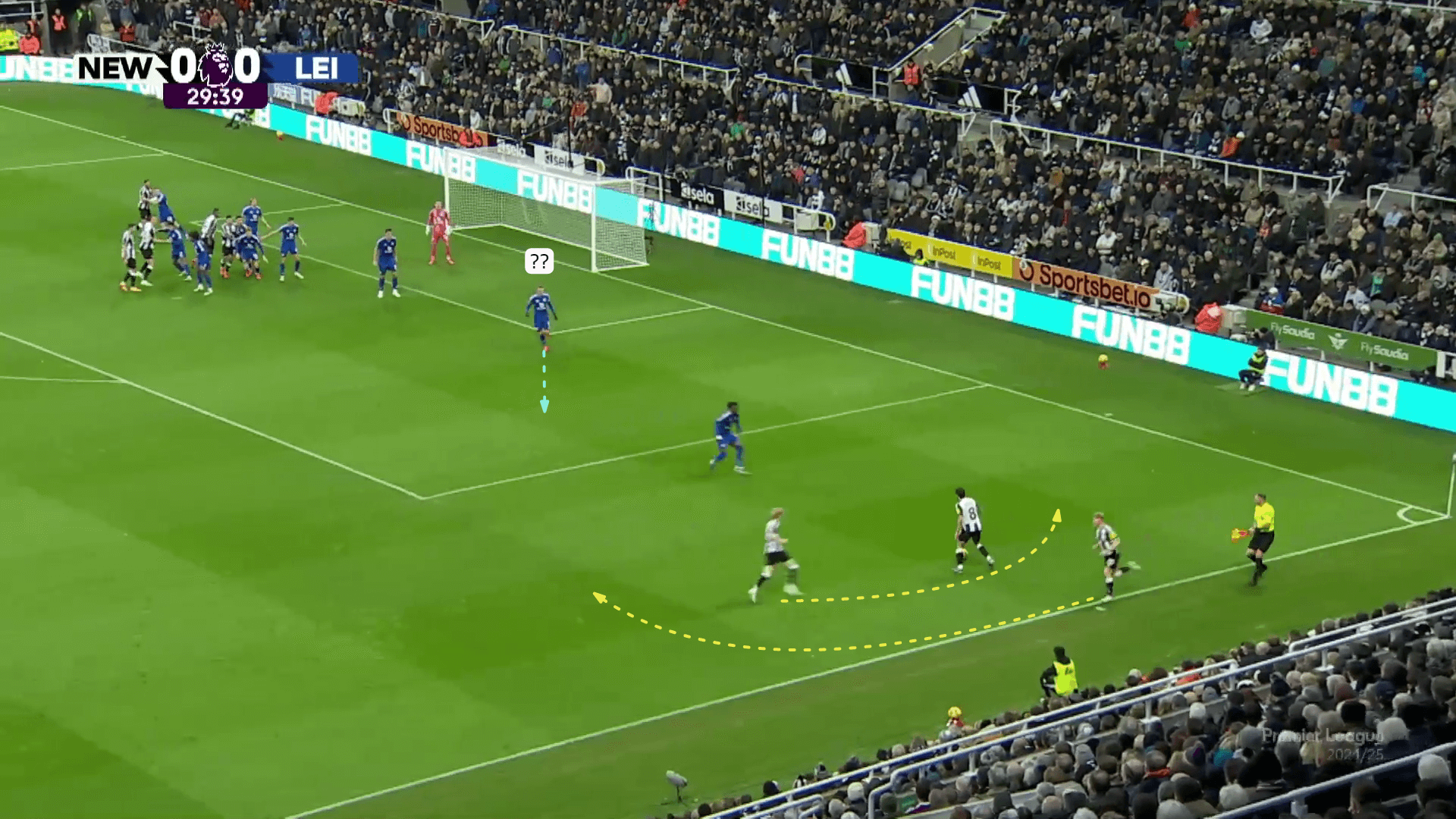
This makes it easy for the short-option attacker to pass the ball to the rebound defender (after doing the overlap run) toward the line because of the usual two-versus-one quick situation.
Here, we should also mention the role of the two highlighted players (white) on the far post, who try to slow down the zonal line’s progress by pushing the man marker and doing their best to make the player who receives the pass onside.
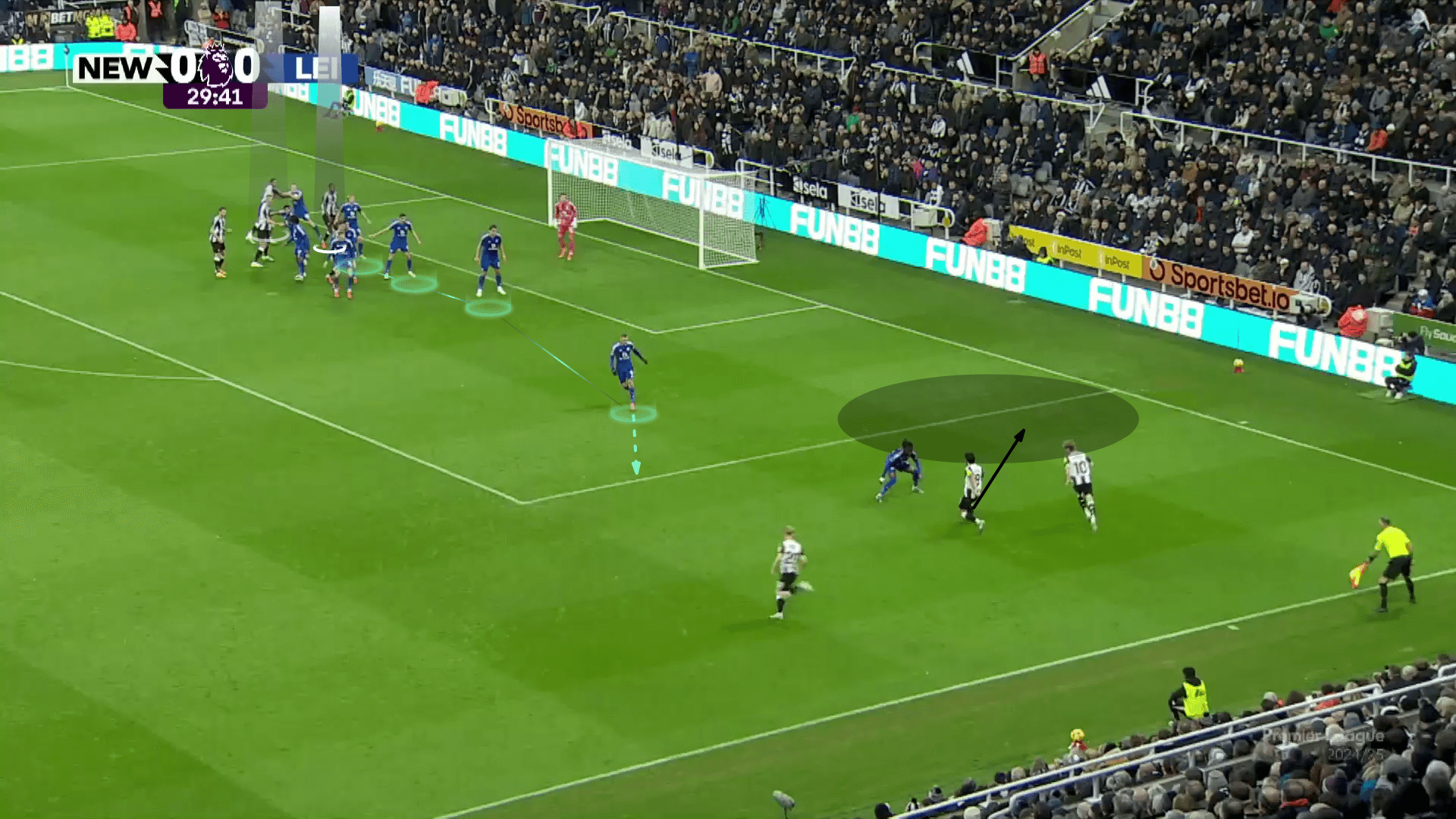
In the photo below, there is no offside, and the two white-highlighted players try to ensure that, too.
The other important thing is that the targeted player, the second rebound defender (blue), starts to run late after all of these conflicts to avoid attracting attention.
Hence, the player who gets the ball dribbles inside to attract and shrink the defending block, gradually emptying the targeted area for a cut-back pass to the blue-highlighted player.
At the same time, the two players in pink run to the near and far posts to provide probable passing options and attract the defenders, while the player in orange blocks anyone who tries to reach the targeted area.
The taker (yellow) goes to stand as a rebound player to get the second ball to be ready for any scenario.
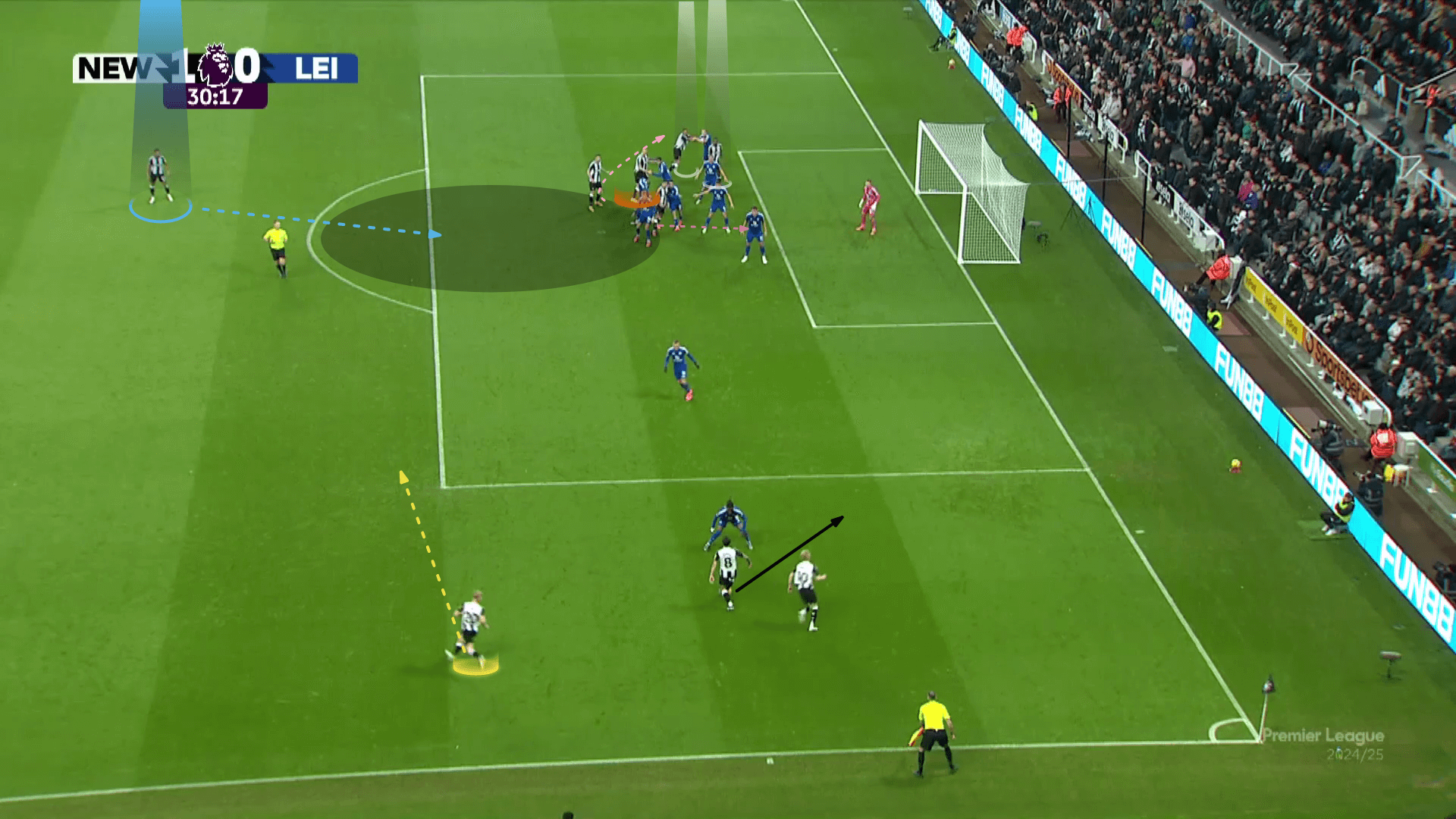
As shown below, the plan is done perfectly and ends with an important and amazing goal.
Here, the block is so clear (orange) while having four options in case the player with the ball decides to pass or cross it.
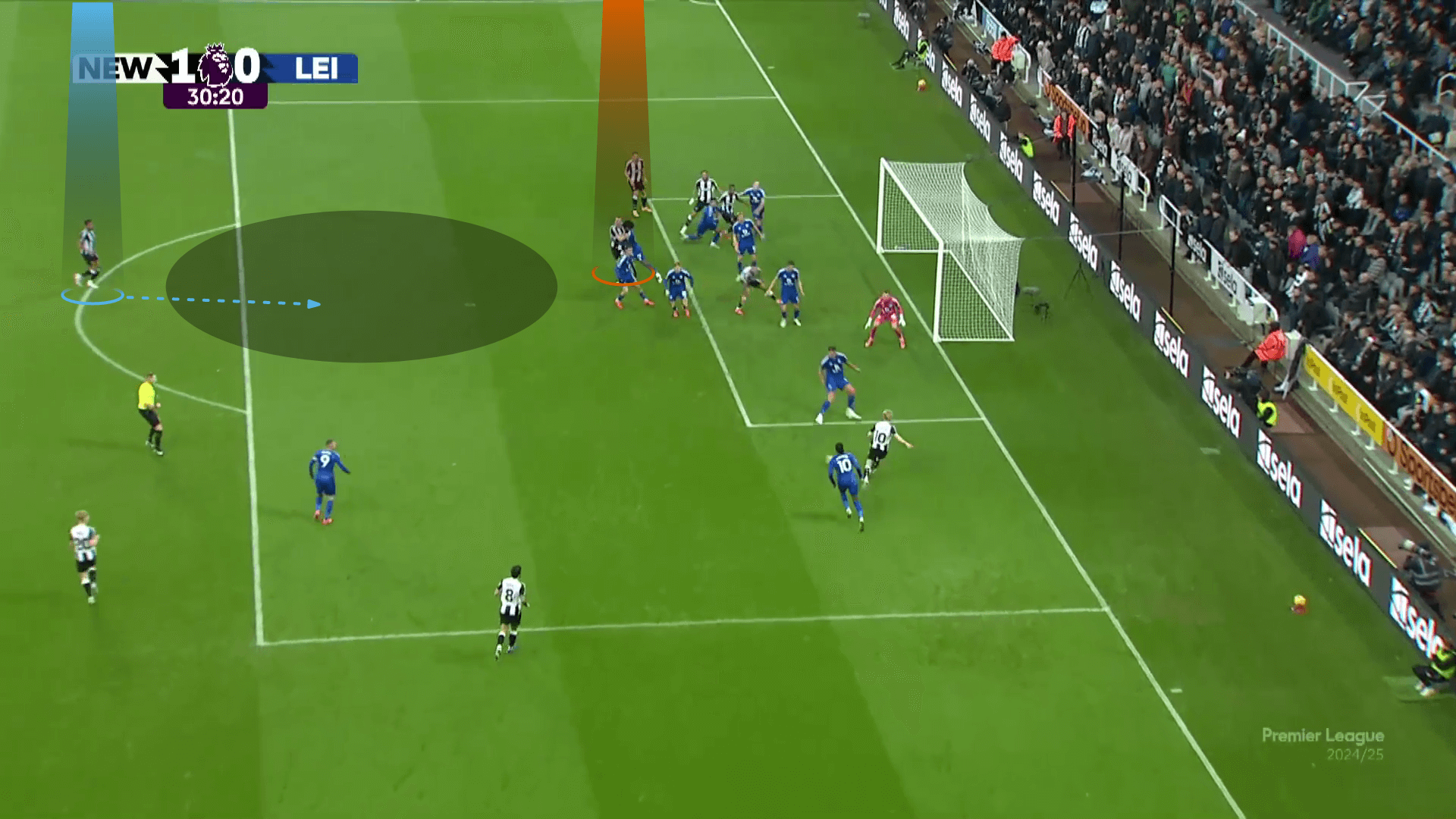
After that, they have a variation to target the rebound area in a more direct way.
pic.twitter.com/AuoVXNrmtM
— Footie Clips (@FootieClips) December 17, 2024
In the photo below, the taker passes the ball directly to the first player standing on the edge of the box, who will pass the ball to the second player on the edge of the box (yellow).
Thus, the first zonal defender doesn’t have time to react.
In this case, we see an extra sixth player in the box (white) standing behind the zonal line, trying to delay this pushing up to make it easier for the targeted player to shoot.
We can also note the late runner (pink), who stands initially on the edge of the box to hide their intentions of passing to the yellow player, and he moves away, pushing his marker as the routine begins.
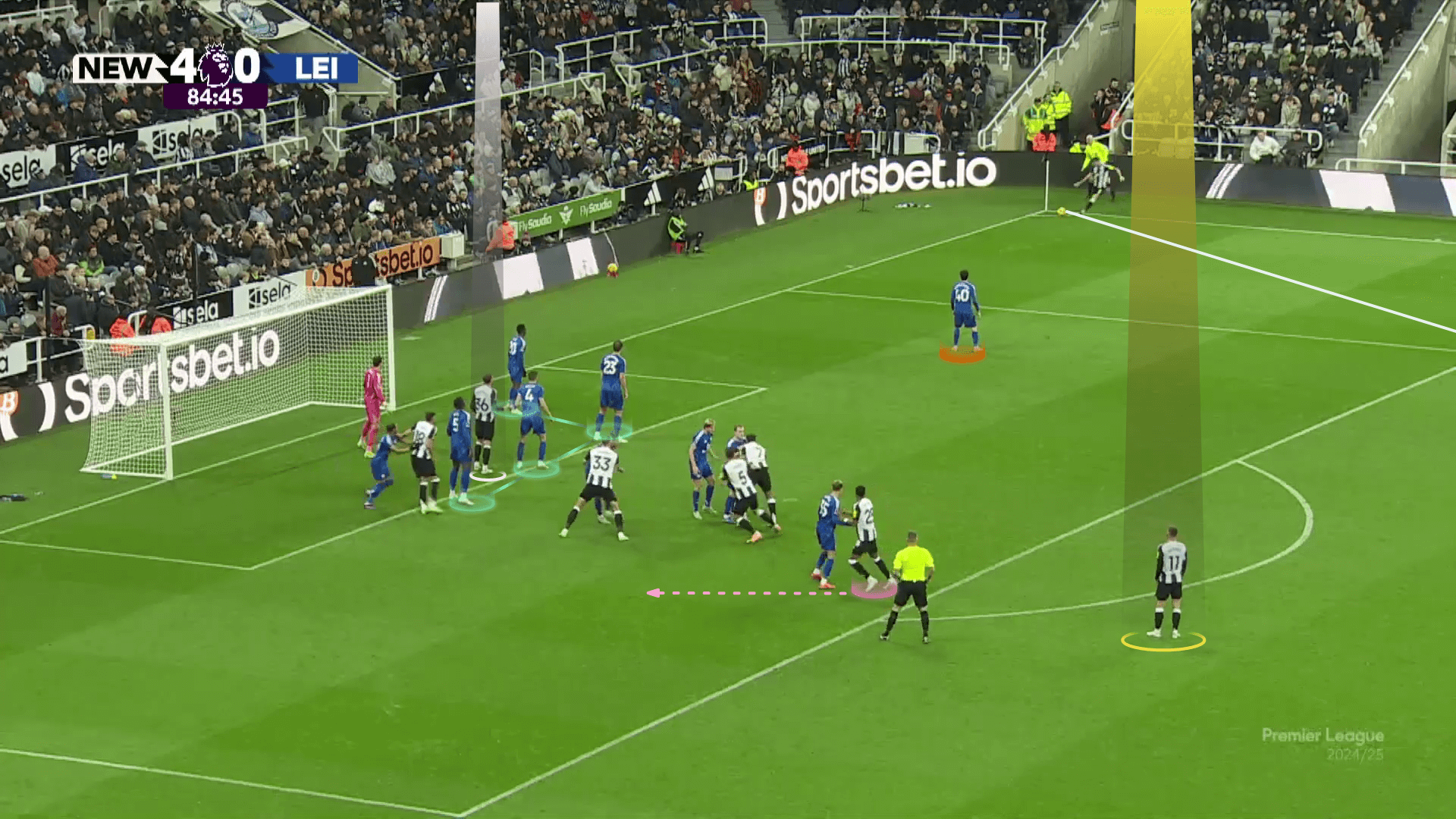
As shown below, the routine is implemented excellently as planned.
The orange player makes the same far-post run on the defenders’ blind side as in the first corner of the match to be ready to receive the cross from the player who has the ball in case he decides not to pass or anything happens to hinder this routine.
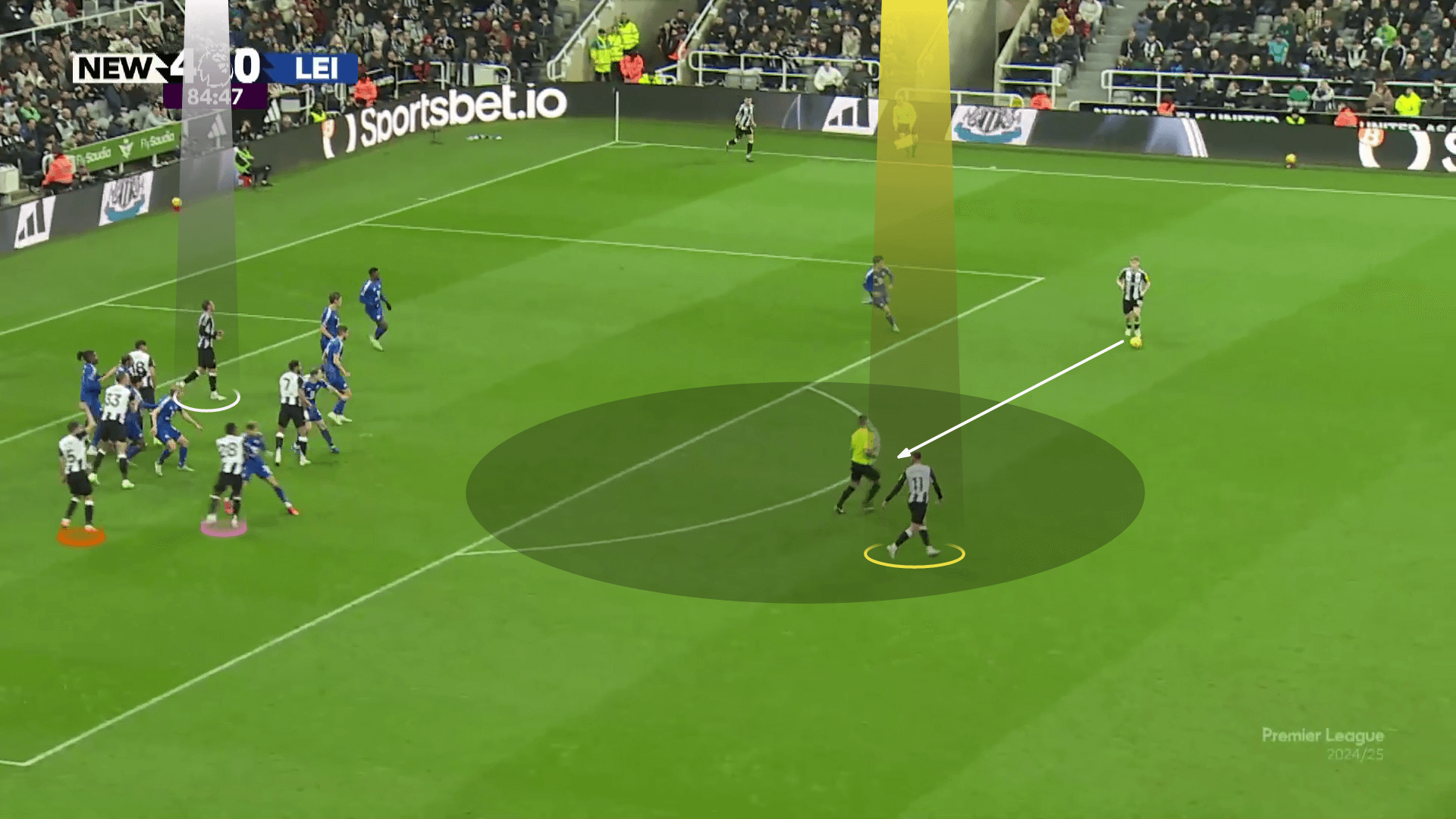
The plan worked, but the shot was easily taken towards the goalkeeper, maybe because it was from a slightly far distance.
Conclusion
This analysis shows how Newcastle United overwhelmed Leicester City by exploiting set-pieces, especially the art of short corners, with many varied, simple, and effective routines.
In this set-piece analysis, we have proved that good coaches benefit from each other, so Newcastle United studied Leicester City’s match against West Ham United to overcome them using short corners with some simple and effective variations.






Comments